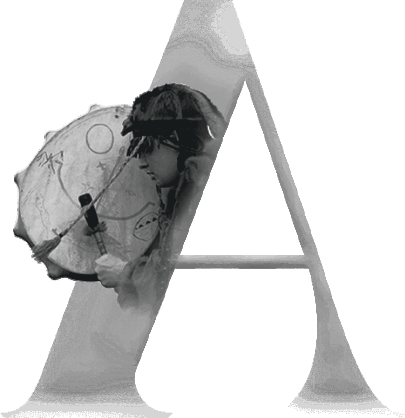The Depths of Consciousness:
Exploring Trance States and Their Symptoms
Exploring Trance States and Their Symptoms
By entering a trance state, a man gradually descends from the surface of ordinary consciousness to deeper levels. It would be useful to have some method of measuring the degree of state reached. Below are some symptoms that indicate that different levels of trance depth have been reached. For ease of understanding, all these symptoms are divided into four main sections: relaxation, light, medium, and deep trance. It is just worth noting that even when you are in a deep trance state, you will not necessarily notice all of the symptoms below.

During relaxation you go from normal awareness to the following state: feeling of physical relaxation and heaviness in the limbs, lethargy, mental relaxation, feeling of apathy and indifference, not concentrating on anything, staring blankly into space (if the eyes remain open), unwillingness to move the limbs. As this state deepens and you enter a soft trance, breathing becomes more infrequent and deep, and at the same time the pulse rate decreases.
In a soft trance state, a feeling of reluctance to move, speak, think or act progresses. Some people may experience involuntary movements of the mouth, lower jaw and sometimes the eyes. You may also experience a feeling of heaviness throughout the body and a sense of some detachment. At this level, visual illusions may already occur. As you approach the next stage, you begin to realize that you are in a trance state, but have difficulty describing the sensations.
In a medium trance state, you know exactly that you are in a trance and experience a sense of partial amnesia unless you consciously choose otherwise. By imagining certain things to yourself, you can achieve insensitivity of any part of the body to pain, as well as experience illusions of touch and the sensation of any taste or smell. In this state, a person is more sensitive to changes in atmospheric pressure and temperature. As you approach the next stage, there is a feeling of complete numbness of the limbs or the whole body. In other words, if the position of your arms, legs, or entire body changes in any way, you will remain in that position until the next change.
While in a deep trance, you can open your eyes without any change in your state. At the same time, you will be able to control body functions such as heart rate, blood pressure, digestion and body temperature. You will be able to give your limbs or the whole body absolute rigidity and firmness. You will be able to retrieve forgotten memories and experience the sensation of disappearing age. Being in a deep trance, you can fully experience the feeling of lightness, floating, flight and, of course, experience visual and auditory hallucinations of both positive and negative nature, which, if desired, arise not only in the trance state, but also after leaving it, during normal awareness. In this case, the term “positive hallucination” means that your consciousness senses something that is not really there, and the term “negative hallucination” means that the consciousness does not notice the presence of things that really exist. In a deep trance state, dreams or visions can also be stimulated, both during the trance itself and later during normal sleep.
Each stage of trance can have useful applications. For example, in a light to medium trance state, you can begin to learn the practices of shamanic journeys, during which you will see, hear, touch, and even smell worlds bordering our own. During a soft trance, these journeys seem very much like ordinary fantasies or very vivid dreams, so you will probably question whether the worlds you see are real or products of imagination. However, as you learn to descend deeper and deeper, the journeys will become more vivid and alive, and when you begin to enter a deep trance, the worlds you visit will look and feel as real as the ordinary world around us.
In a soft trance state, a feeling of reluctance to move, speak, think or act progresses. Some people may experience involuntary movements of the mouth, lower jaw and sometimes the eyes. You may also experience a feeling of heaviness throughout the body and a sense of some detachment. At this level, visual illusions may already occur. As you approach the next stage, you begin to realize that you are in a trance state, but have difficulty describing the sensations.
In a medium trance state, you know exactly that you are in a trance and experience a sense of partial amnesia unless you consciously choose otherwise. By imagining certain things to yourself, you can achieve insensitivity of any part of the body to pain, as well as experience illusions of touch and the sensation of any taste or smell. In this state, a person is more sensitive to changes in atmospheric pressure and temperature. As you approach the next stage, there is a feeling of complete numbness of the limbs or the whole body. In other words, if the position of your arms, legs, or entire body changes in any way, you will remain in that position until the next change.
While in a deep trance, you can open your eyes without any change in your state. At the same time, you will be able to control body functions such as heart rate, blood pressure, digestion and body temperature. You will be able to give your limbs or the whole body absolute rigidity and firmness. You will be able to retrieve forgotten memories and experience the sensation of disappearing age. Being in a deep trance, you can fully experience the feeling of lightness, floating, flight and, of course, experience visual and auditory hallucinations of both positive and negative nature, which, if desired, arise not only in the trance state, but also after leaving it, during normal awareness. In this case, the term “positive hallucination” means that your consciousness senses something that is not really there, and the term “negative hallucination” means that the consciousness does not notice the presence of things that really exist. In a deep trance state, dreams or visions can also be stimulated, both during the trance itself and later during normal sleep.
Each stage of trance can have useful applications. For example, in a light to medium trance state, you can begin to learn the practices of shamanic journeys, during which you will see, hear, touch, and even smell worlds bordering our own. During a soft trance, these journeys seem very much like ordinary fantasies or very vivid dreams, so you will probably question whether the worlds you see are real or products of imagination. However, as you learn to descend deeper and deeper, the journeys will become more vivid and alive, and when you begin to enter a deep trance, the worlds you visit will look and feel as real as the ordinary world around us.
+79221343011 Whatsapp, Viber, Telegram, Signal
info@ahamkara.org
Follow Ahamkara on:
https://ahamkara.teachable.com/ - Online Shamanic School
https://www.facebook.com/ahamkara.eu/notifications... - my Facebook
https://www.instagram.com/ahamkara.eu/ - my Instagram
info@ahamkara.org
Follow Ahamkara on:
https://ahamkara.teachable.com/ - Online Shamanic School
https://www.facebook.com/ahamkara.eu/notifications... - my Facebook
https://www.instagram.com/ahamkara.eu/ - my Instagram
